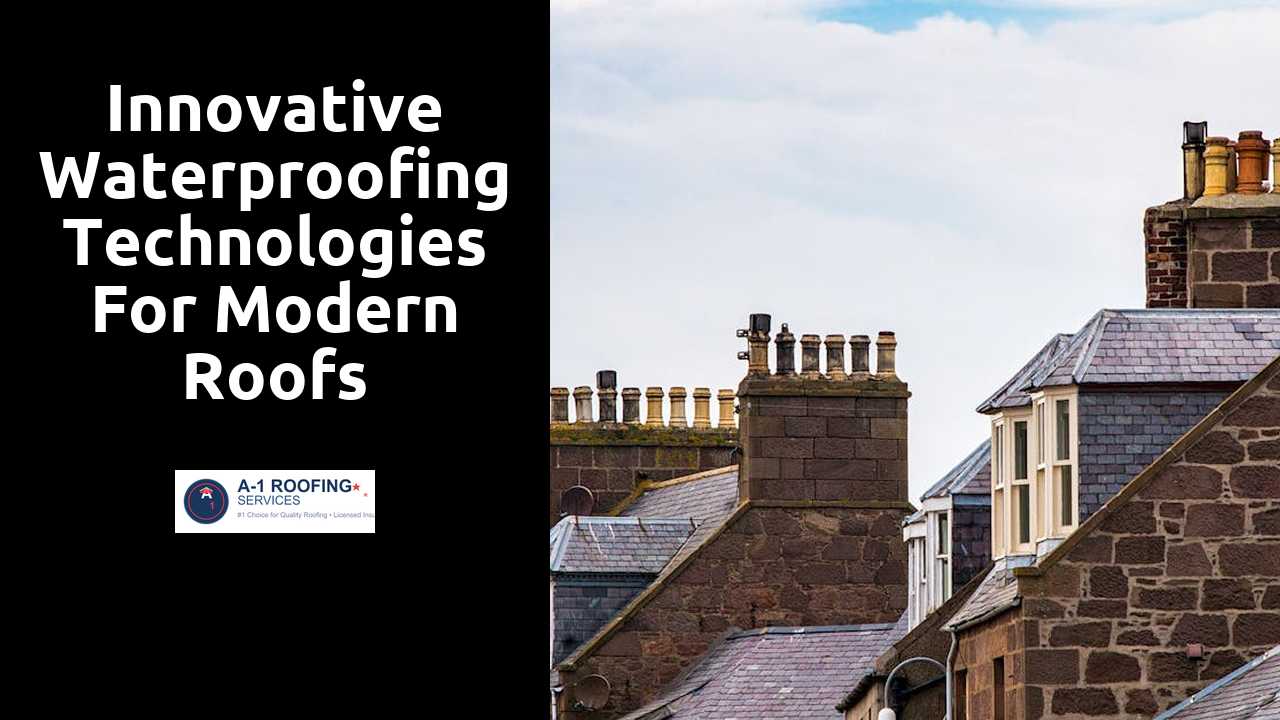
Innovative Waterproofing Technologies for Modern Roofs
Table Of Contents
Spray Foam Technology
One of the most effective methods for waterproofing roofs today is through the application of spray foam. This technology involves using a mixture of polyurethane materials that, when sprayed, expand rapidly upon contact with the surface. The foam hardens into a solid, seamless barrier, providing exceptional insulation while simultaneously preventing leaks and moisture infiltration. Its adherence to various substrates ensures a tight seal that traditional waterproofing methods often fail to achieve.
Not only does spray foam offer excellent waterproofing properties, but it also contributes to energy efficiency. The insulating qualities of the foam help to regulate roof temperatures, reducing the need for additional heating or cooling systems within the building. This can lead to significant cost savings on energy bills over time. Additionally, the lightweight nature of spray foam allows for easy application without adding unnecessary stress to the existing structure. This versatility makes spray foam a popular choice among architects and builders alike.
Their blog is a great resource for information.
How Spray Foam Enhances Roof Longevity
Spray foam roofing systems create a seamless barrier that effectively prevents moisture intrusion. This uninterrupted layer reduces the chances of leaks significantly, decreasing the likelihood of water damage to the underlying structure. Additionally, the elasticity of spray foam allows it to expand and contract with temperature changes. This adaptability helps to mitigate the effects of thermal stress, promoting overall roof durability.
Another advantage of spray foam is its strong insulation properties, which help maintain a consistent temperature within the building. By minimizing heat transfer, these systems reduce the workload on heating and cooling units, leading to energy savings over time. The enhanced energy efficiency contributes to lower utility costs, further extending the life expectancy of the roof. Regular inspections and maintenance of spray foam roofing also play an important role in preserving its integrity, ensuring long-term functionality.
Nano-Technology in Waterproofing
Emerging advancements in waterproofing solutions have prominently featured nano-technology. This innovative approach leverages the unique properties of nanoparticles to enhance traditional materials, thereby improving their water resistance. By incorporating these minute particles, manufacturers can create coatings that repel water more effectively. The reduced surface tension on treated surfaces helps prevent water from penetrating, which significantly decreases the risk of leaks and damage over time.
Nanoparticles can also provide additional benefits to roofing materials. These include heightened durability and resistance to exposure from harsh environmental conditions. Their small size allows for more uniform dispersion within materials, creating a seamless barrier against moisture. Furthermore, some formulations include added features like UV protection, which prolongs the life of roofing systems. Overall, the use of nano-technology in waterproofing represents a forward-thinking approach to building maintenance and longevity.
The Role of Nanoparticles in Performance
Nanoparticles have transformed traditional waterproofing approaches by significantly enhancing performance characteristics. These microscopic particles, often derived from materials like silica or titanium dioxide, are engineered to interact uniquely with surfaces. Their small size allows them to penetrate deeper, creating a dense barrier that repels water and resists environmental stressors. This leads to reduced wear and tear on roofing materials, effectively prolonging their lifespan.
The incorporation of nanoparticles can also improve adhesion between layers in waterproofing systems. They act at the molecular level, fostering stronger bonds that contribute to the overall integrity of the roof structure. Additionally, these advanced materials often provide additional benefits, such as resistance to UV degradation, which further protects roofs from the sun’s harmful rays. This multifaceted approach enhances the longevity and durability of roofs, making them an appealing option for homeowners and builders alike.
Smart Roof Innovations
Rapid advancements in technology have led to the emergence of intelligent waterproofing systems. These smart roofs incorporate sensors and self-diagnostic tools that monitor environmental conditions, detecting leaks and vulnerabilities in real-time. This proactive approach enables building owners to address issues before they escalate into costly repairs. Data collected by the sensors allows for efficient maintenance schedules, optimizing the lifespan of the roofing system.
Additionally, some smart roofs utilize materials that react dynamically to changing weather conditions. These innovations can adjust their properties to enhance energy efficiency and waterproofing capabilities. By integrating renewable energy sources, such as solar panels, intelligent waterproofing systems contribute not only to building protection but also to sustainability goals. Such technological advancements reflect a growing trend towards creating roofs that are not only functional but also adaptive and resilient.
Features of Intelligent Waterproofing Systems
Modern waterproofing systems leverage advanced technology to offer features that significantly improve their efficiency and reliability. These intelligent systems often come equipped with sensors that monitor moisture levels and detect potential leaks in real-time. This proactive approach allows for immediate responses, reducing the risk of extensive damage and costly repairs. Many of these systems also integrate smart home technology, enabling users to check roof conditions remotely and receive notifications about any issues.
In addition to real-time monitoring, intelligent waterproofing solutions often utilize self-healing materials. These materials can automatically seal small leaks or cracks as they occur, enhancing the durability of the roof. The incorporation of energy-efficient components further elevates these systems, contributing to improved thermal performance and reduced energy consumption. Features like these make it easier for property owners to maintain their roofs and extend their lifespan while minimizing environmental impact.
Related Links
Assessing Waterproofing Needs for Different Roof TypesLong-Term Benefits of Proper Roof Waterproofing